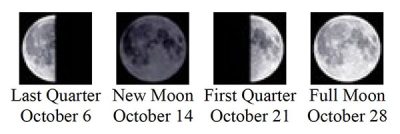As We Turn into Fall, Admire the Brilliance of Summer Triangle
Opinion Advocates for ideas and draws conclusions based on the author/producer’s interpretation of facts and data.

By Scott Levine
On a breezy night a week or two ago, I got the dishes on and off the table and slipped out into the night, with a cup of tea and one of my kids a few steps behind.
Over the years, the curb at the corner has been our favorite south-facing spot. It’s a welcoming place to stare through the breaks in the leaves and rooftops, catch our breath and watch the cavalcade of stars dance overhead.
From that spot, as grey has crept into the sides of my head and the scruff on my chin, and taller and taller kids have taken over my house, I’ve watched the constellations make their way through the night. As we chatted about whatever mayhem had happened during the first weeks at school, I looked up into the heart of Summer Triangle, as reliable as an old friend.
Tonight, let’s head out and look high overhead, way up in neck-ache territory. There, we’ll find the very bright stars Vega and slightly dimmer Altair. A light year is the distance light, which is the fastest thing in the universe, travels in a year: about six trillion miles. Altair’s 16 light years away, and Vega is about 25.
While distances to the stars are so unimaginably huge that it’s tough to talk about them in miles or kilometers, it becomes much easier, if a little self-centered, to think of them as being so far that their light has been traveling for 16 and 25 years, respectively, just to reach us.
At the Triangle’s third corner is a star called Deneb. It’s to the left of Altair if we look at it with Vega at the top of the triangle and pointing toward the west. While the other two are among the closest to us, not Deneb.
Here’s a good chance to try to see the sky not as the flat sheet that it appears to be when we look up, but as having volume and depth. If we can imagine it in three dimensions, we’d see Deneb not next to the others, but far behind them. In fact, it’s about a hundred times farther.
As we look at it, we’re drawing a line, perfectly straight, from our eyes out into the galaxy. In an instant, we pass Altair, Vega and star after star until we reach Deneb, almost 2,000 light years away.
While Deneb appears dimmer than the others, it’s still one of the brightest we can see with the naked eye. It’s amazing to think of what must be going on there for us to see it as brightly as we do here, from such a great distance.
As the leaves gather at our feet, the skies will keep turning and more and more old friends will join the night. By the time we’re together again, the first of winter’s stars will be back, but the Summer Triangle will, just like it does year after year, keep making its way across the night. Come January, it’ll still be with us, fading into a freezing dusk.
With a few laughs and a last sip, my cup was empty. We both headed back in. I hope to see you at the curb.
Clear skies, everyone!
Scott Levine (astroscott@yahoo.com) is an astronomy writer and speaker from Croton-on-Hudson. He is also a member of Westchester Amateur Astronomers, a group dedicated to astronomy outreach in our area. For information about the club including membership, newsletters, upcoming meetings and lectures at Pace University and star parties at Ward Pound Ridge Reservation, visit www.westchesterastronomers.org.

Examiner Media – Keeping you informed with professionally-reported local news, features, and sports coverage.
